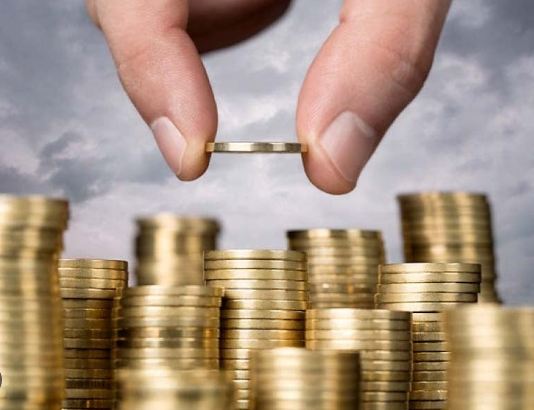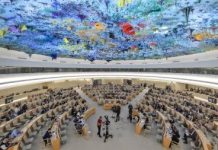ISLAMABAD, JAN 21 (DNA) — In 2023, Pakistan returned from the verge of debt default. Amid the turbulence of surging inflation and budget deficit, we see that due to some corrective measures such as government fiscal reforms and cost cut, economy started getting back to stability.
What can we expect for 2024? To answer this question, China Economic Net (CEN) had an interview with Dr. Abid Qaiyum Suleri, executive director of Sustainable Development Policy Institute (SDPI), Pakistan and member of the Pakistan Climate Change Council for some insights.
“I’m optimistic that Pakistan’s economic situation will start to improve in calendar year 2024. The elections will bring the much needed certainty. The resolve from all mainstream political parties that they will go to the IMF for the next program if they get a chance to form a government will ensure much-needed fiscal discipline and policy consistency. It will also help in shoring up Pakistan’s foreign exchange reserves. This in turn will improve Pakistan’s creditworthiness, too”, he said.
In its latest report “Global Economic Prospects — January 2024”, the World Bank projected Pakistan’s economic growth at 1.7 percent for the ongoing fiscal year 2023-24 and 2.4 percent in FY2024-25, an inspiring recovery from -0.2 percent in the previous fiscal year.
According to Dr. Suleri, two external factors can affect Pakistan’s economic performance in 2024. One is global energy prices, which are dependent on the geopolitical tensions.
“If the Ukraine-Russia tension remains, or if the situation in the Middle East gets worse, that would have an impact on the prices, which would have impact on our economic outlook”, he said.
The second important factor is climate change. A bad monsoon or El Nino may weigh against the agriculture sector. “If the two external factors remain favourable, then I am quite optimistic that securing a modest GDP growth will not be difficult”, he said.
In 2023, a major improvement for Pakistan is a significant drop of trade deficit by 34.29 percent during the first half of the current fiscal year starting from July 2023 compared to the corresponding period of the last fiscal year.
In particular, Pakistan’s exports to China during July-December, 2023 hiked by 66.4%, reaching US$1.5458 billion.
“This trend is expected to continue in 2024”, he said, explaining that the re-opening of China’s border after Covid-19 restrictions, the resilience of China’s economy as proven by the way it handles the real estate risks, and the substantial demand in the second largest market globally will continue to benefit Pakistan as with many other countries that are economically inter-related with China.
“To have a clearer picture of Pakistan’s economic outlook for 2024, we need to go back to 2023. There are at least two lessons domestically that can take us to 2024”, he told CEN reporter.
“The first lesson is Pakistan should have consistent relations with the last resort, i.e., IMF”, he analysed, adding that Pakistan, unfortunately, like many of the debt-affected countries, has to remain under IMF umbrella.
“We saw that once we went back from IMF with the $3 billion stand-by agreement, things start to come under control. When the government was reluctant to go to IMF and turn to the friendly countries for help, we realized that they would also like Pakistan to go back to IMF discipline”, he said.
The second lesson is about the necessity to take some administrative measures through the Special Investment Facilitation Council (SIFC). “After taking IMF program, we saw that in September 2023, the value of PKR versus USD got a shot up to almost 350 in the open market. There were problems of energy, misuse of trade subsidies, hoarding and panic around currency, etc.
That’s where SIFC came to action. After corrections were given, we saw the value of PKR against USD come back to 285. We saw a major crackdown on energy cheating. We saw the control on misuse of Afghan transit trade agreement. With administrative actions put into place, things can be smooth”, he said.
A prominent challenge for Pakistan within sight is the transition to a greener economy. For long, it was seen that going green would have a negative impact on growth. That hypothesis is no longer valid. Now, countries, aware that the cost of protection is high, have to go green.
“But the cost of transition is high. So at the multilateral level, we should keep talking about climate justice and the historical responsibility of advanced economies”, he said.
He shared that SDPI, as a founding member of the Beijing Initiative for Belt and Road Green Development, has been promoting awareness as well as capabilities. “China has been stressing green Belt and Road cooperation, which provides opportunities for Pakistan to learn”, he said.
“If we look at EV, Chinese companies have surpassed Tesla, when it comes to the supply of electric vehicles. Pakistan should open up its vehicle market, not only as an importer of EV, but should enter in joint ventures whereby those EVs could be manufactured in Pakistan that could further reduce cost to consumers.
“Technological advancement, innovation, and the booming service sector are driving China’s economy. As the Chinese economy is taking up, Pakistan, as with many other countries that are economically interrelated with China, would be able to get the benefit of it”, he said.
“Pakistan can learn China’s climate smart agriculture experience such as the application of digital technologies in agriculture, renewable energy, etc. On the affordability side, Pakistan needs to enhance affordability by making the best use of CPEC. And a third area of cooperation is the production of agricultural products in Pakistan by joining hands with Chinese experts. These are some of the areas where Pakistan and China can work together”, he added. — DNA

















